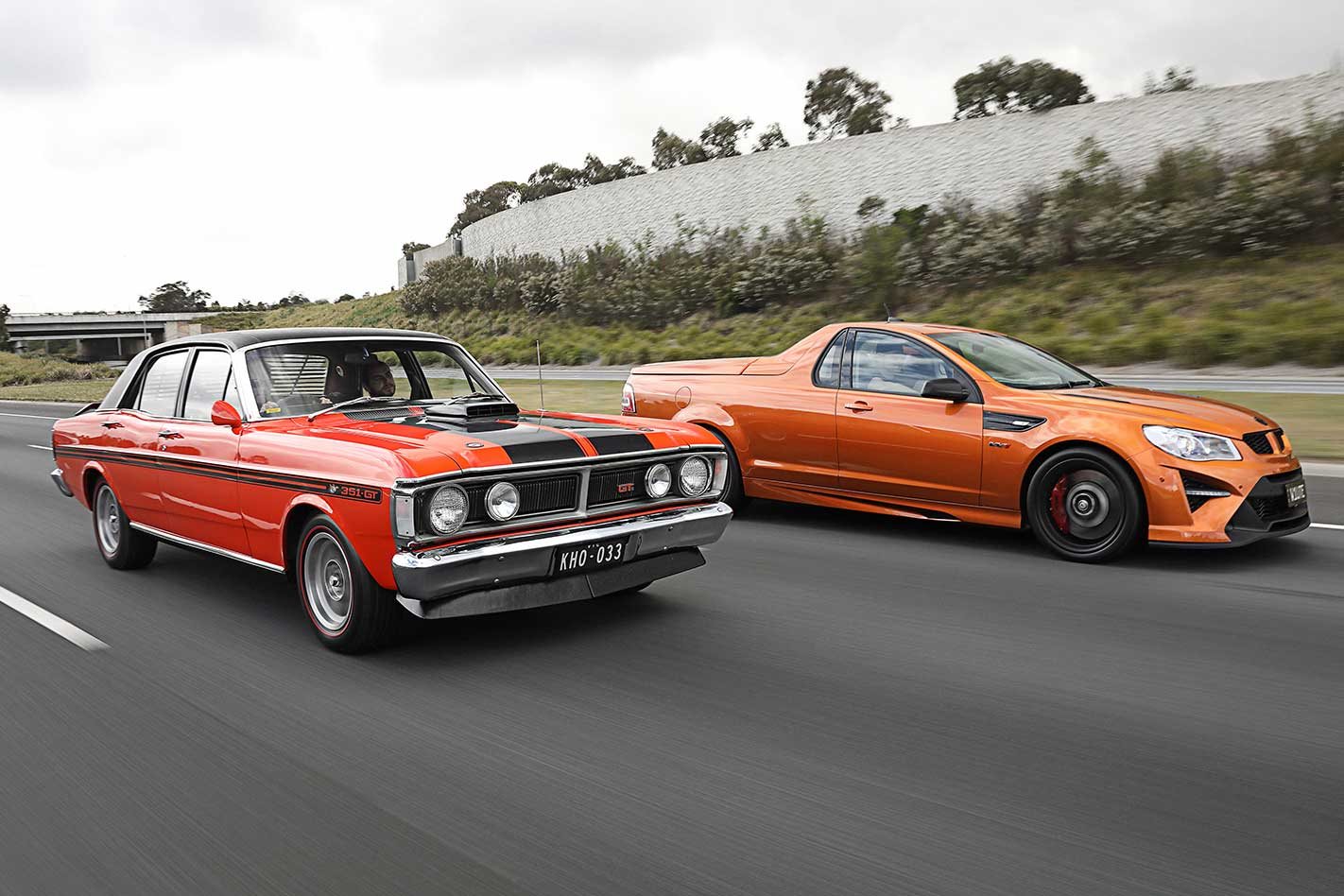Sixty-five million years ago, a cataclysmic climate event occurred. Scientists are split on whether it was an asteroid strike or an enormous volcanic eruption, but the effect was to eradicate most of the life on earth and end the reign of the dinosaurs.
The events that led to the fall of the Australian car manufacturing industry were more varied: globalisation, political gamesmanship, unionisation and, above all, changing market tastes all played a part, but the end result was equally catastrophic. Aussie-made cars met the same fate as the Tyrannosaurus Rex and Triceratops.
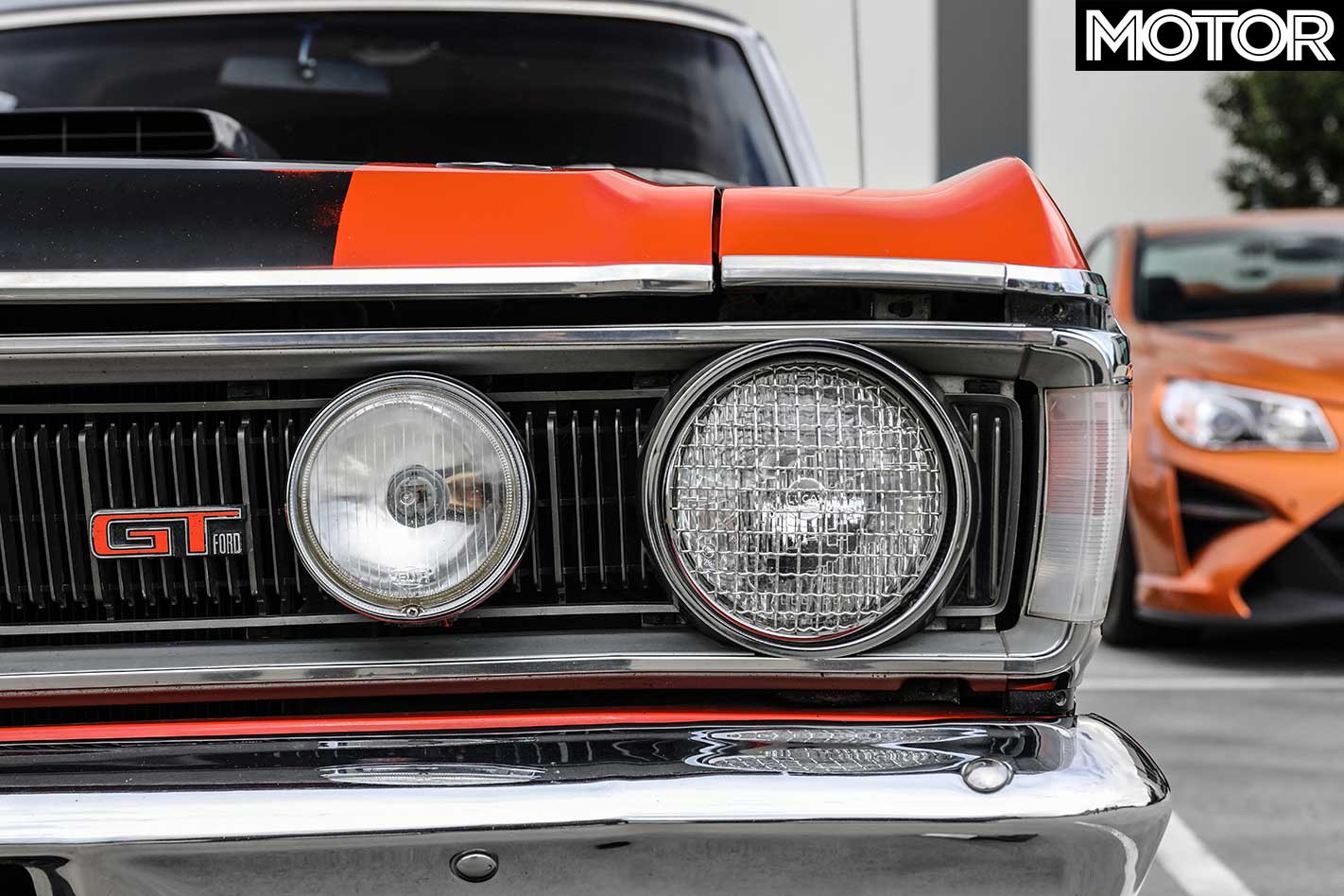
Unlike the demise of the dinos, it’s easy to identify the exact times and places that spelled the end of the Aussie car industry. On October 7, 2016, a blue FG X Falcon XR6 became the final model to roll out of Ford’s Broadmeadows plant.
A little over a year later, on October 20, 2017, a red VF II SS-V Redline sedan was the final Aussie Holden built, before HSV ended its program with a Light My Fire (gold) GTSR W1 on January 3, 2018. Just like that, the lights turned off on more than 100 years of Australian vehicle manufacturing, unlikely ever to be switched on again, at least in a volume capacity.
With the final chapter of the story written and the back cover closed, it’s time for reflection. What were the highlights? The list quickly narrowed down to offerings from Ford and Holden. With the greatest of respect to the likes of Mitsubishi, Toyota, Nissan and many others who had an Australian manufacturing presence over the years, a Ralliart Magna, Camry Sportivo and Pulsar SSS weren’t going to cut it.
Perhaps surprisingly, it wasn’t difficult to whittle down the contenders from each brand. Representing the red camp, the ultimate Commodore, the HSV GTSR W1, while from the Blue Oval it could only be the Ford XY Falcon GT-HO Phase III.
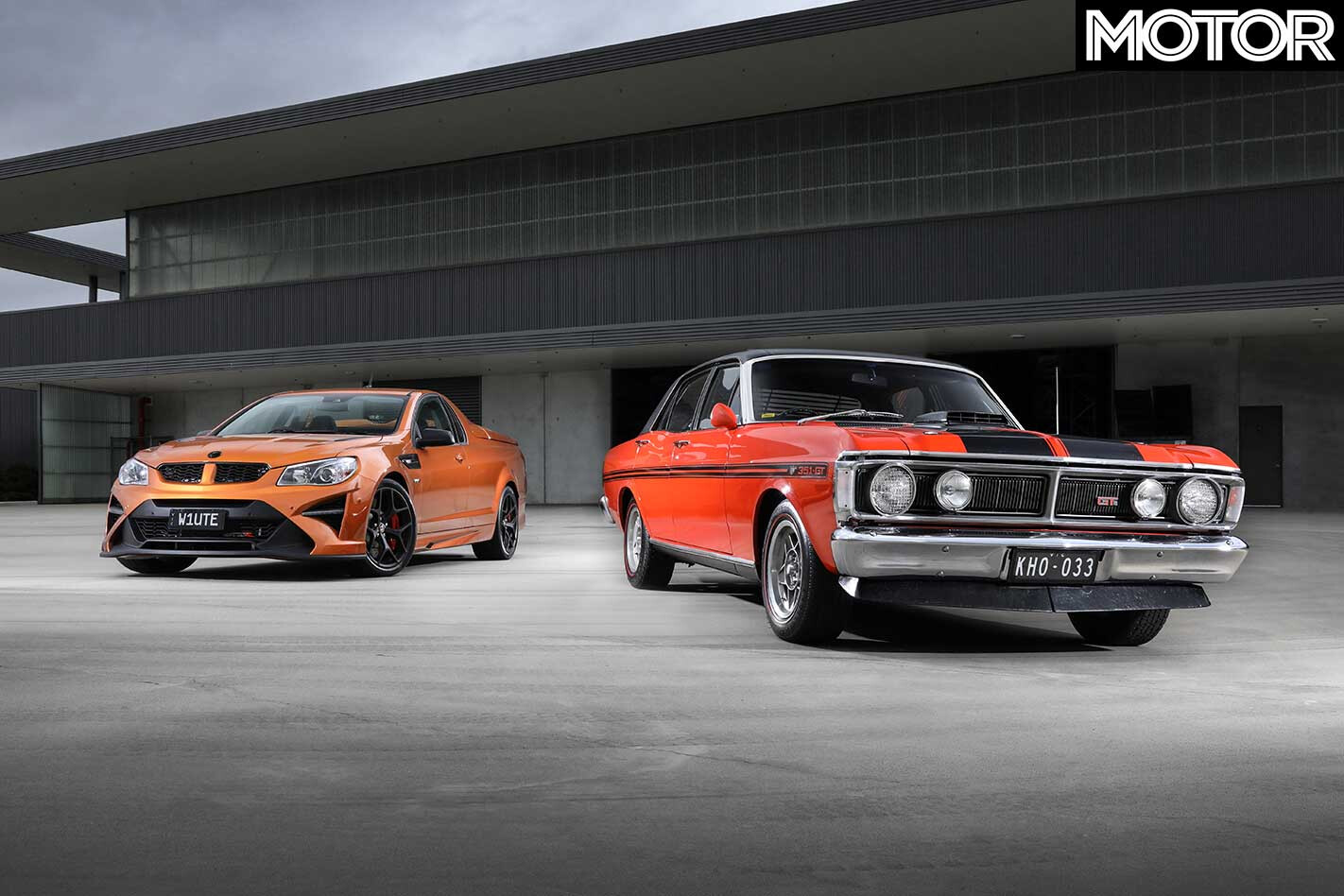
Or at least that was the plan. An opportunity then presented itself to include one of just four Maloo W1s, unofficially the final ever Australian-made car, an opportunity that couldn’t be passed up, because there’s nothing more Aussie than a 474kW/815Nm ute.
The object of this exercise isn’t to name the greatest Australian muscle car – any attempt to do so would be deliberately provocative and ultimately futile – but to compare and contrast two machines separated by almost 50 years and yet inextricably linked by purpose. Furthermore, thanks to the incredibly generous owners, it offers a chance to talk to a pair of enthusiasts who were willing to drop serious amounts of money to turn dreams into reality.
Let’s start with the Ford. For many, the GT-HO Phase III is the ultimate Australian muscle car. Its status is so legendary that it achieves the near-impossible task of earning respect from the opposing camp.
Even Holden die-hards who would rather walk across broken glass than sit in a Ford will give a Phase III a nod of acknowledgement. As the fastest four-door in the world, it earned this reverence with outrageous performance. The Mercedes-Benz 300SEL 6.3 is often mentioned in the same breath, but the Phase III was two seconds quicker to 160km/h.
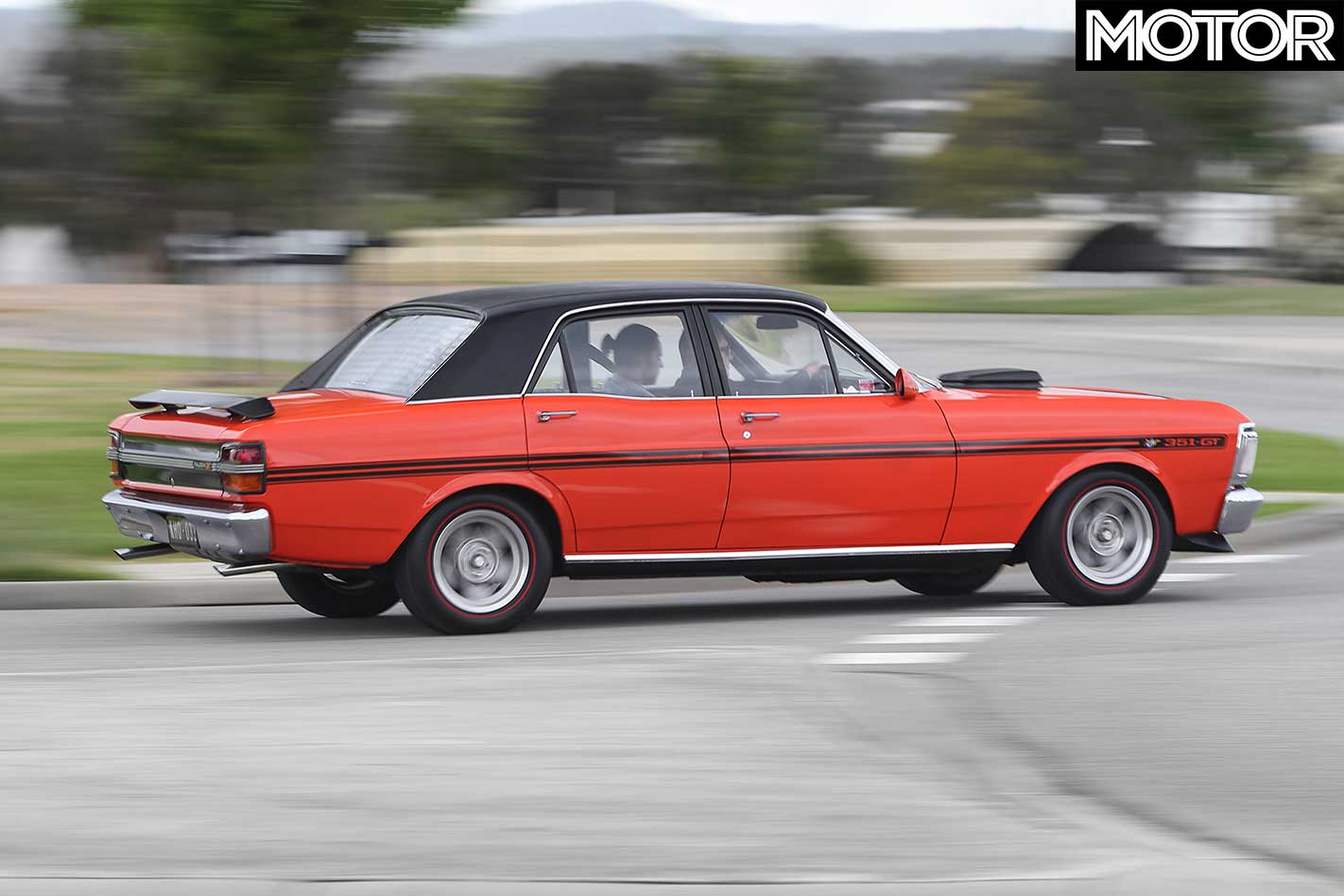
Our sister mag Wheels recorded the benchmark Phase III figures of 0-60mph (97km/h) in 6.4sec, 0-100mph (161km/h) in 15.2sec and a 14.4sec quarter mile. However, that test car was fitted with the tall 3.25:1 Bathurst diff ratio; with a fresh engine built by guru Mick Webb and the shorter 3.5:1 diff, the car you see on these pages would best those times.
A better illustration of what a leap forward the Phase III represented is Allan Moffat’s 1971 Bathurst pole position time of 2min38.9sec. This was more than 10 seconds quicker than his pole time the year before and an incredible 24-second improvement over Ian Geoghegan’s XR GT benchmark just four years earlier.
Despite the car’s value, owner Chris isn’t afraid to use the performance, nor encourage John Bowe (on hand to help record a WhichCar TV segment) to do so. The engine is the heart of the Phase III. It’s a monster.
The blood-curdling roar as revs rise is all encompassing and the power more than ample for the chassis it’s propelling, but it’s the response that’s most impressive, the angry Cleveland feeling to be plugged directly into the end of your foot. However, without wishing to stir a hornet’s nest, the enjoyment of driving this Bathurst bruiser lies in the emotional experience rather than the physical one.
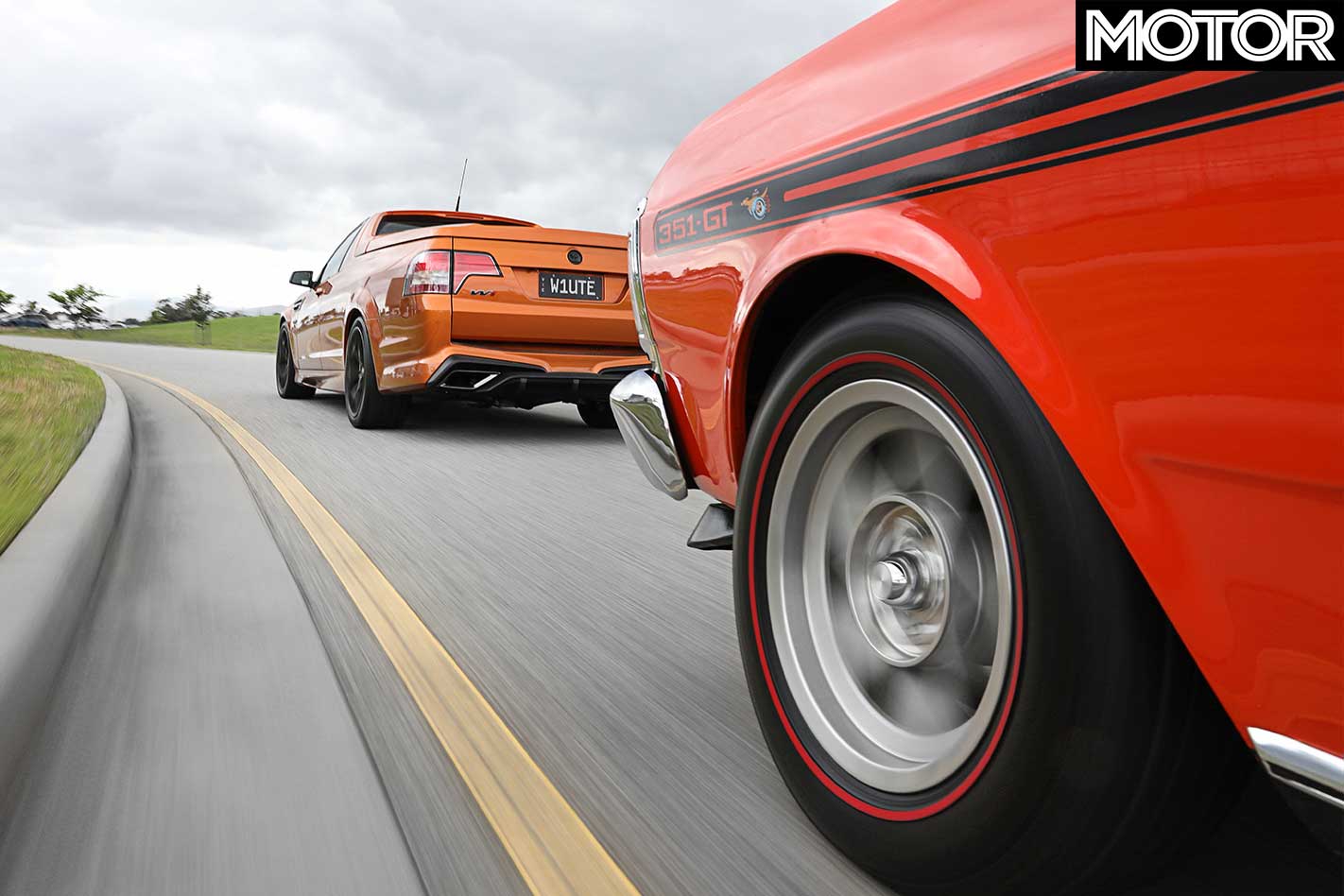
The steering is heavy at slow speeds and vague at higher ones, the brakes a mere suggestion and the body pitches and rolls in a straight line, let alone in the corners, but the feeling of driving such a piece of history is immensely rewarding.
It’s why Chris borrowed against his house 18 years ago, in order to capitalise on the rare opportunity of putting one of just 300 Phase IIIs in his garage. While the price paid was an awful lot of money almost two decades ago, suffice to say it’s been a very smart investment, though as he sagely observes: “It’s worth nothing unless I sell it.” Chris’s story is perhaps typical of many high-end Aussie muscle car owners, with many years of hard graft creating a successful business resulting in the chance to fulfil a childhood dream.
“My first car was an XY GS 351; I had it on my learner’s” he explains .“[I said] ‘I’m going to own a Phase III one day’. I worked my butt off, saved some money, then I had the opportunity to buy this so I sold the two XY GTs I had at the time and bought this. I was determined to have one.”
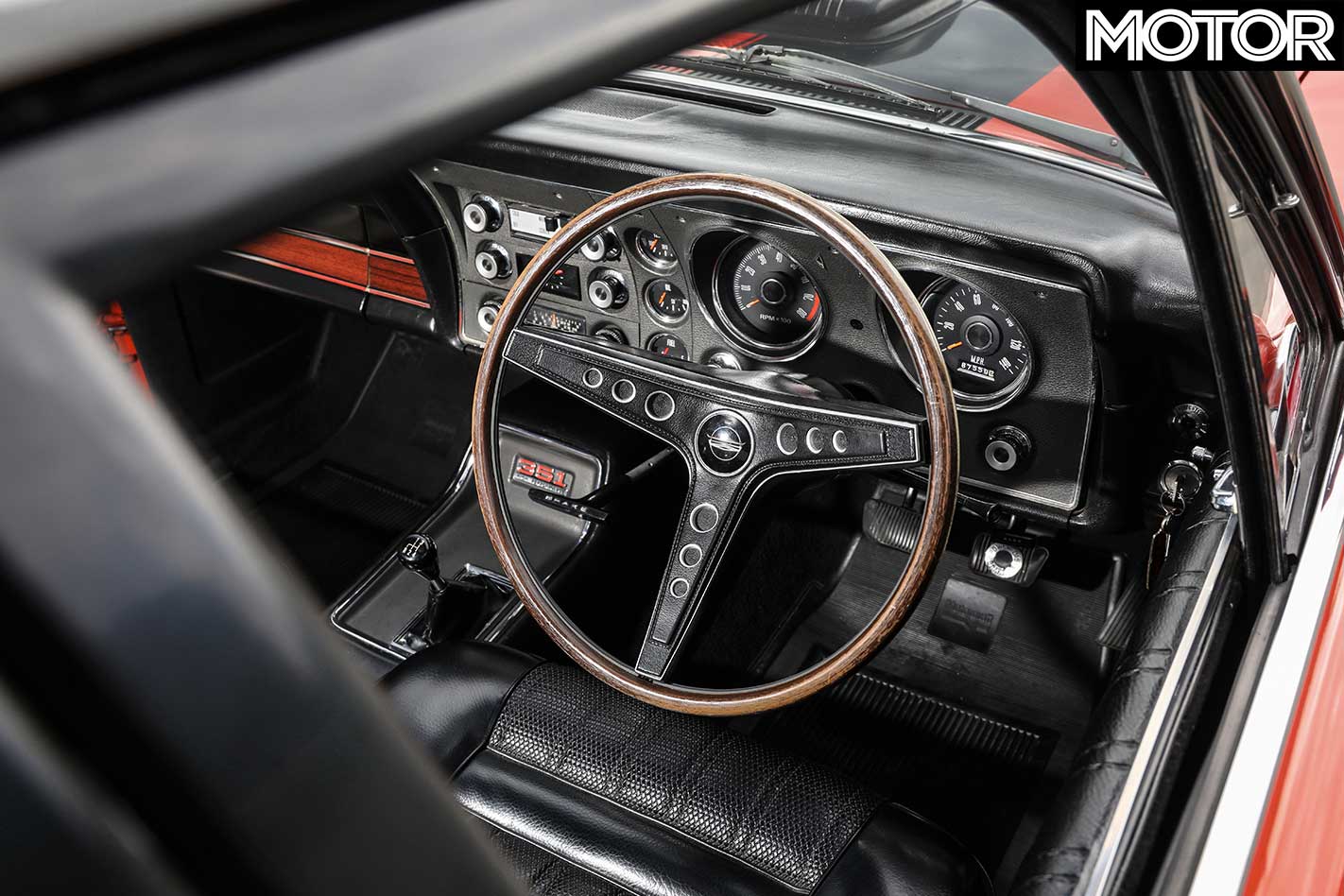
According to leading GT historian Mark Barraclough of Australian Classic Car History Services, Chris’s Phase III is an early car with a 31-spline 3.5:1 rear diff, vinyl roof (one of just 17 and one of eight in black) and 1970-build CK608 engine, though this wasn’t fitted when it was purchased.
In what can only be described as a miracle, the engine appeared in Tasmania having been pulled out of an XW GT for machine work. The machinist recognised it was a Phase III donk and called GT historian Ellis French, who subsequently called the GT Club of Victoria to re-unite the engine with its rightful home. Chris was eventually contacted, flew down to Tassie, verified it was the real deal – there are a number of codes that give the game away – and secured the missing piece of the puzzle.
“He didn’t want drug money for it,” says Chris of the previous owner. “He was an enthusiast and believed the engine should go back to the car.” Nevertheless, the chances of the engine still existing and a machinist knowing what they were looking at are infinitesimal.
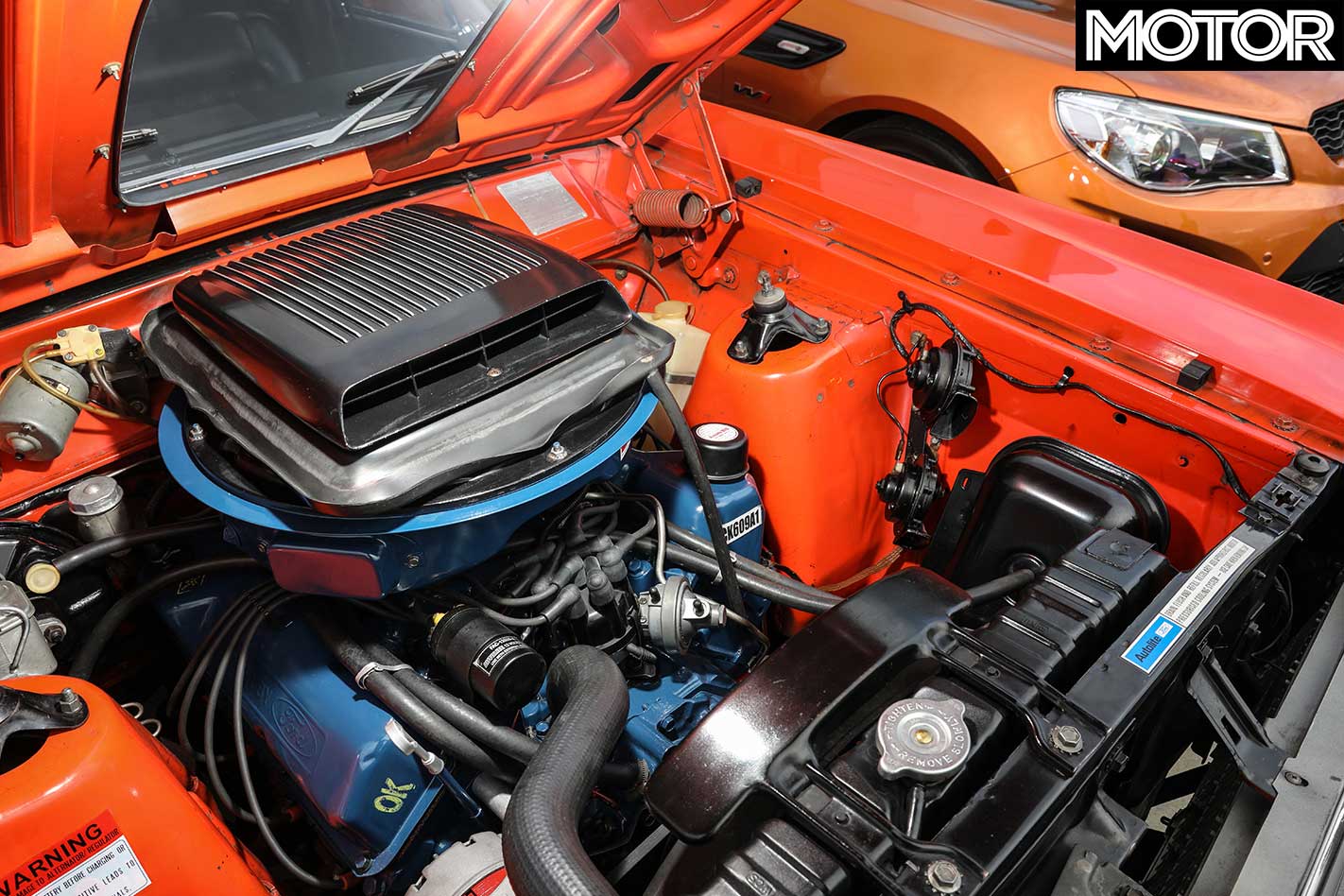
For years it seemed as though the Aussie muscle car would retire having peaked early. After all, if you accept the premise that Ford invented the Aussie muscle car with the XR GT (the Holden EH S4 has a claim, but a shaky one), then the genre reached its summit a mere four years after materialising.
Such is the nature of homologation; the demands of racing necessitate rapid development. Then came the supercar scare and the oil crisis and by the early 1980s it seemed as though the Aussie muscle car was dead. For Ford, it was, the Blue Oval killing off the V8 Falcon for more than a decade.
Holden kept the dream alive, but never managed to deliver a road car worthy of challenging the Phase III’s mantle. The Torana A9X had the motorsport pedigree but was heavily neutered in road form, Brock’s HDT Commodores still lagged well behind in outright performance and while HSV’s later stuff could confidently claim to be among the world’s finest four-doors, the W427 was a financial flop and the later Gen-F GTS too commonplace. But HSV had one last hurrah planned, the GTSR W1.
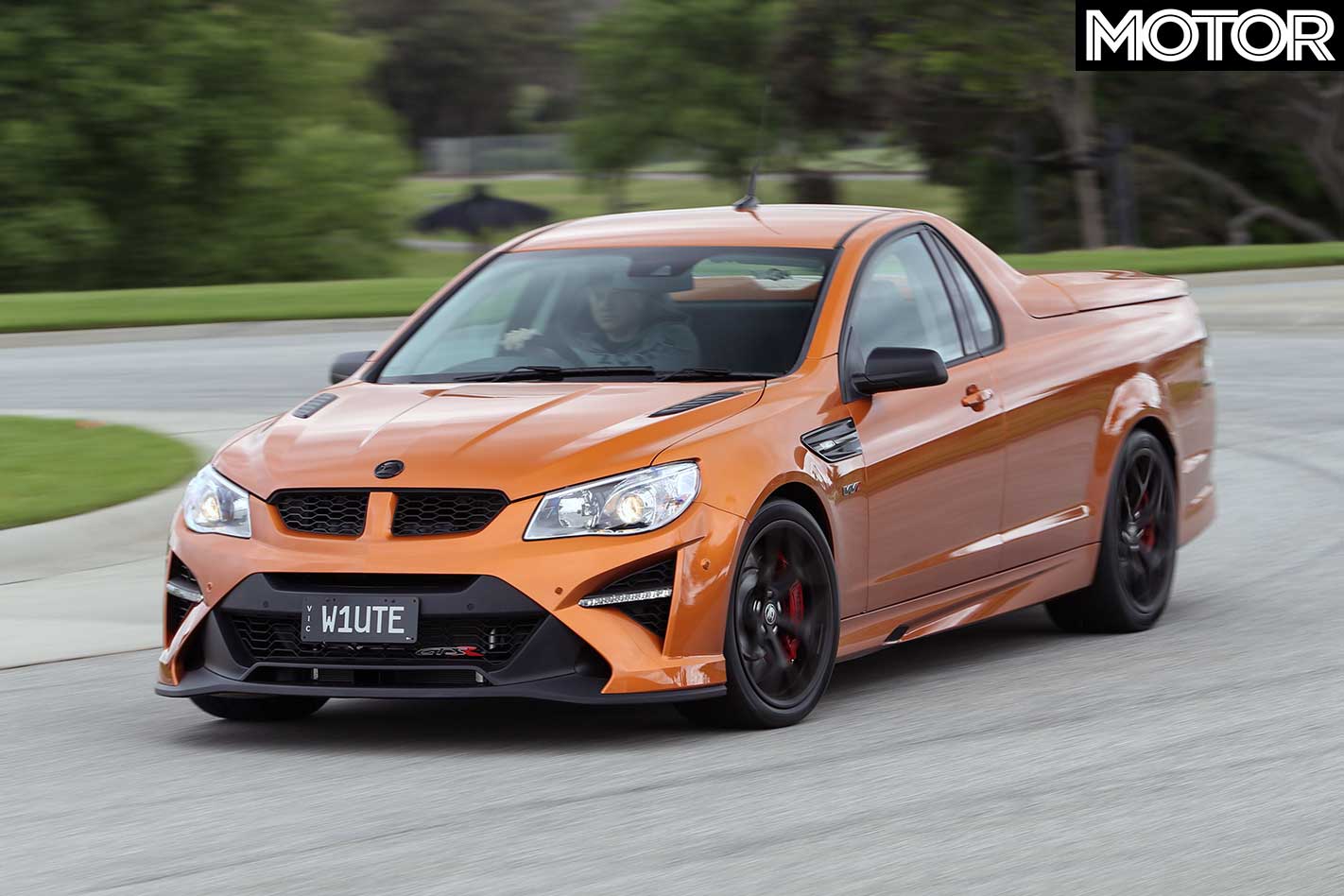
The parallels between the W1 and Phase III go beyond their country of origin and number of doors. Each marked the end of an era, were built in very similar volumes (300 Fords, 298 HSVs) and, most importantly, offered contemporary supercar performance in a practical, family-oriented package.
Equally, both are dominated by their engine. Thankfully, HSV paid remarkably more attention to the chassis with bespoke dampers, massive brakes and sticky R-spec tyres, but drive a W1 and you can’t help but be amazed at how much more responsive the LS9 is compared to the regular GTS’s LSA.
As mentioned earlier, the original intention was to use a regular W1 sedan for this feature, until we discovered the existence of the Maloo W1. Just as four GT-HO Phase IVs snuck out of Ford’s gate before the project was squashed, HSV built four 474kW super utes before pulling the shutters down.
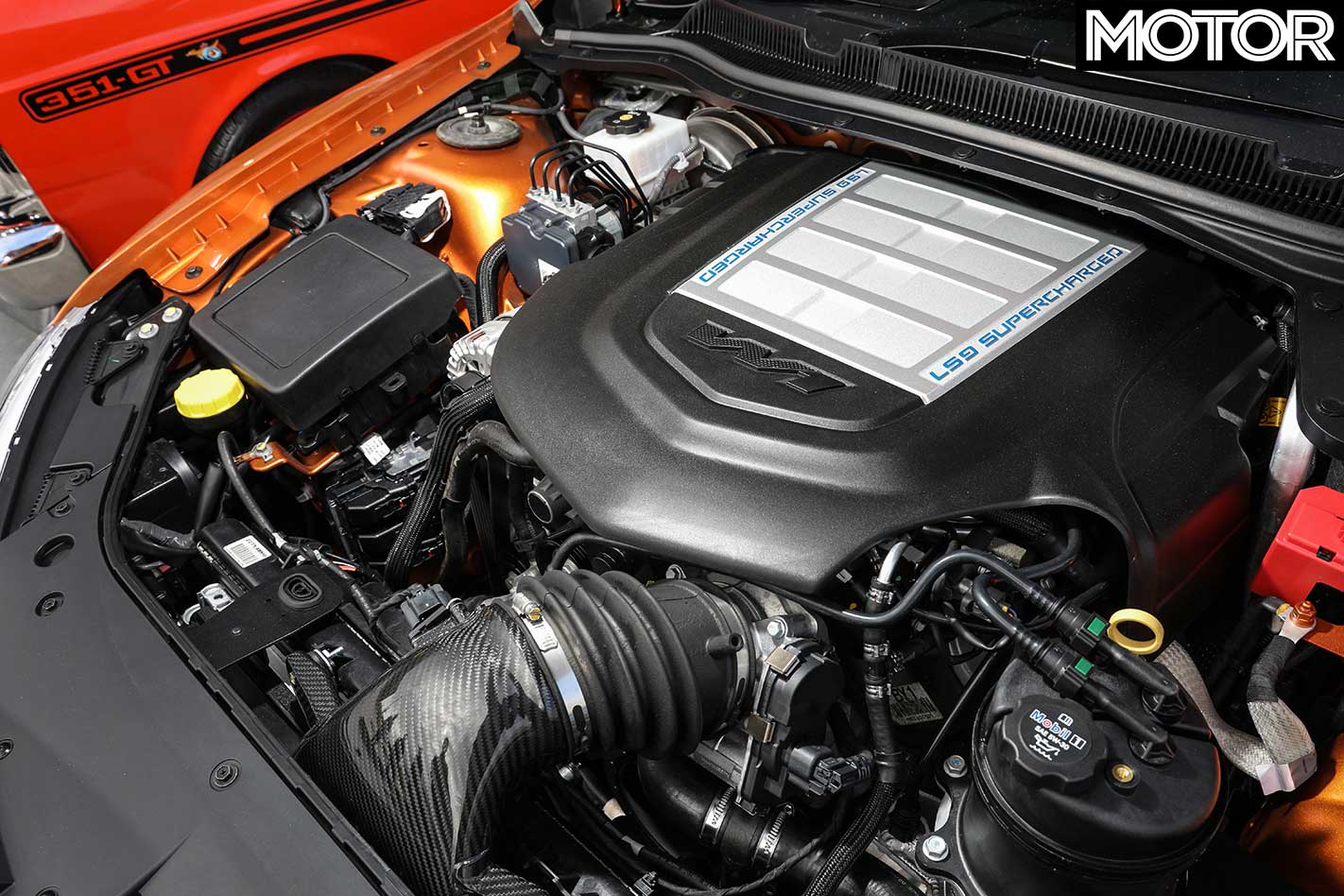
Technically, though, HSV didn’t build them, Walkinshaw Performance did. The cars were registered as GTSR Maloos before Walkinshaw completed the W1 conversion, including the requisite Vehicle Assessment Signatory Scheme approval to ensure they are fully road legal.
The vast majority of the W1 bits are present in the Maloo, including all the juicy mechanical stuff: the 474kW/815Nm 6.2-litre supercharged LS9 V8, close-ratio TR6060 six-speed manual gearbox, custom Supashock dampers, wider wheels (20 by 9.0-inch front; 20 by 10.0-inch rear), monster brakes (410mm floating two-piece rotors and six-piston calipers at the front and 372mm discs with four-piston calipers out back) and super-focused Pirelli P Zero Trofeo R tyres.
Likewise, inside there are the diamond-quilted Podium seats and swathes of Alcantara while outside you’ll find the carbon fibre front guard inserts. It lacks only the quad exhaust outlets (which aren’t compatible with the Maloo rear bar), the side skirts due to the ute’s longer wheelbase and the Aeroflow rear spoiler as there’s no boot to mount it on.
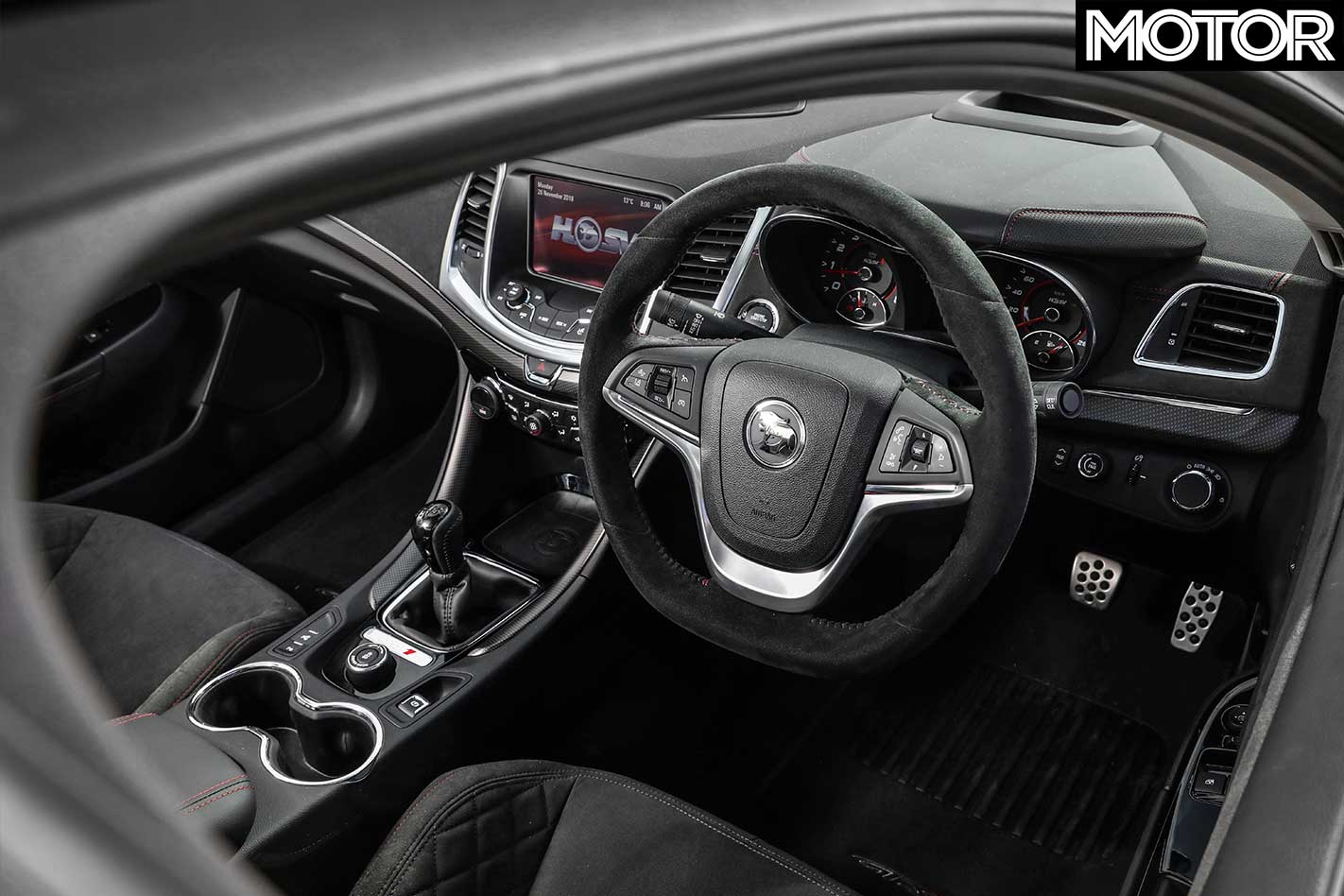
MOTOR has been sworn to secrecy as to what the four buyers paid (and we don’t know exactly) but suffice to say the price tag was enough to park some fairly exotic European metal in your garage. So when you have the money to buy almost anything, why spend it on an Aussie ute, regardless of how much power it has? This is the question we put to our Maloo W1 owner, who we’ll call ‘Justin’ to protect his identity: “I don’t mind the Lambos and those sort of things,” he explains. “I’ve never owned one and probably wouldn’t – my wife would call me a wanker. I’m a country boy and did up old utes which are nice and easy to work on. [I’ve] always had SS utes, that sort of thing, so when the opportunity for this came up I was like a dog with a bone, every day hassling [HSV] saying ‘I want it, I want it, I want it’.” I just want one, indeed.
The number of W1 Maloos that could be created was severely limited by HSV’s supply of the outdated LS9 engine. Two went to HSV executives while the third went to one of HSV’s best customers, which left one up for grabs. “I think I was one of the only people who had wind of it that was keen enough and would do anything to get my hands on it. It was just a matter of hassling the s**t out of HSV every day until I got it across the line.”
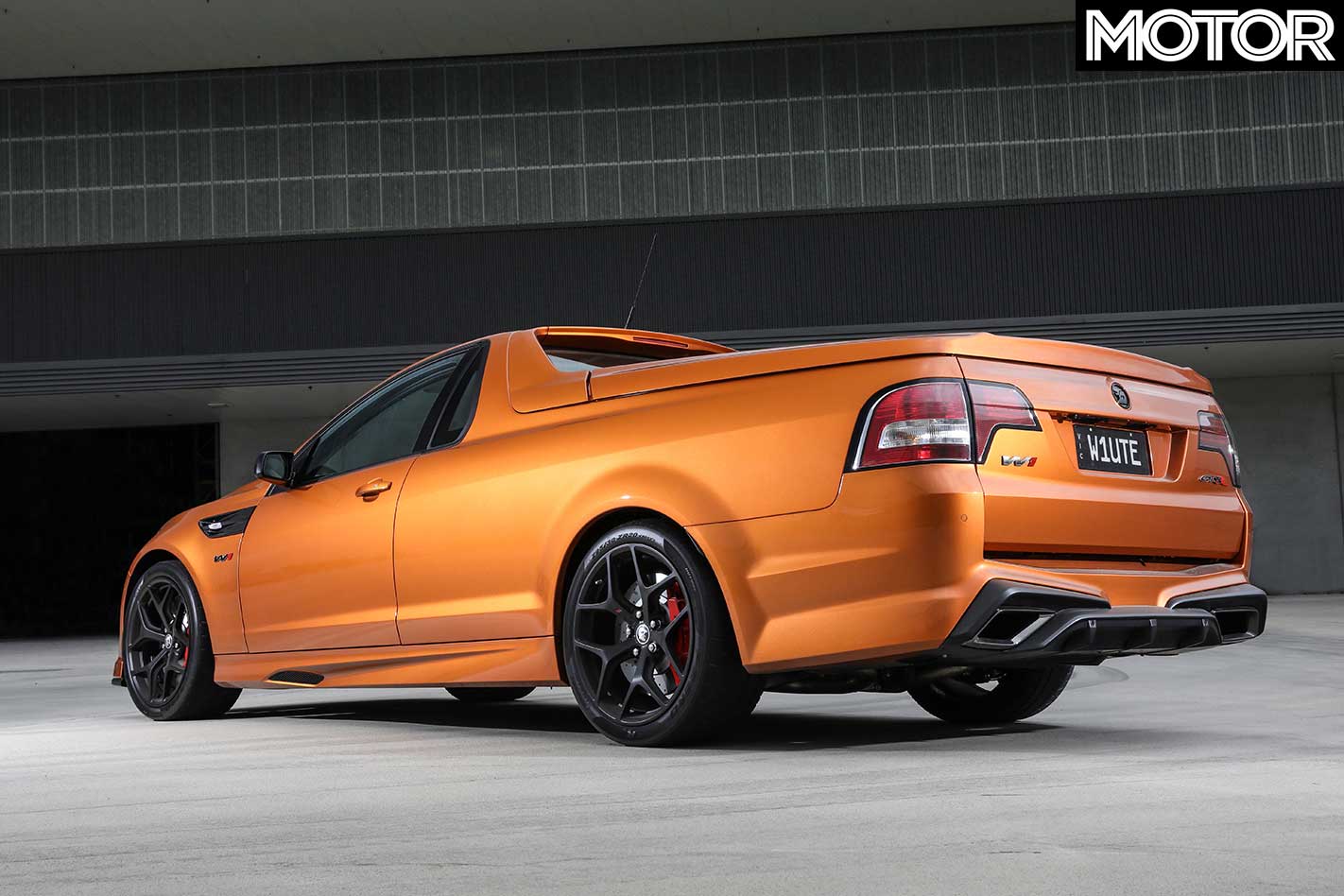
Despite the car’s value and rarity, Justin has no intention of wrapping his beast in cotton wool: “f**k no, I flog the s**t out of it – what’s it there for? My daily driver is a Colorado with a 570kW LSA in it, this thing is my weekender, but I still get it out and take it down to the building site. It doesn’t matter if this thing’s got 100km or 10,000km, it’s one of four, so I might as well drive it and enjoy it.” Amen, though having been lucky enough to drive the Maloo W1 briefly I’ve never driven a car so carefully in my life.
Justin then offers a very interesting comment: “Now that there’s no more Aussie muscle cars getting produced, I think all muscle car owners like both Holden and Ford.” Chris is equally bipartisan; after all, there’s a W1 sedan parked next to the Phase III: “Yeah, definitely, the passion’s not there like it was.”
For decades Ford and Holden fans hated one another, the vitriol garnering worldwide attention as the fiercest automotive rivalry of all. Now, it seems, these warring tribes have been united by a common enemy, the accountants, politicians and fickle buying public who killed off our unique locally made performance products. However, like those ancient scaly reptiles, it’s clear that while Australian muscle cars are now extinct, their legends will live on.
Fast Facts
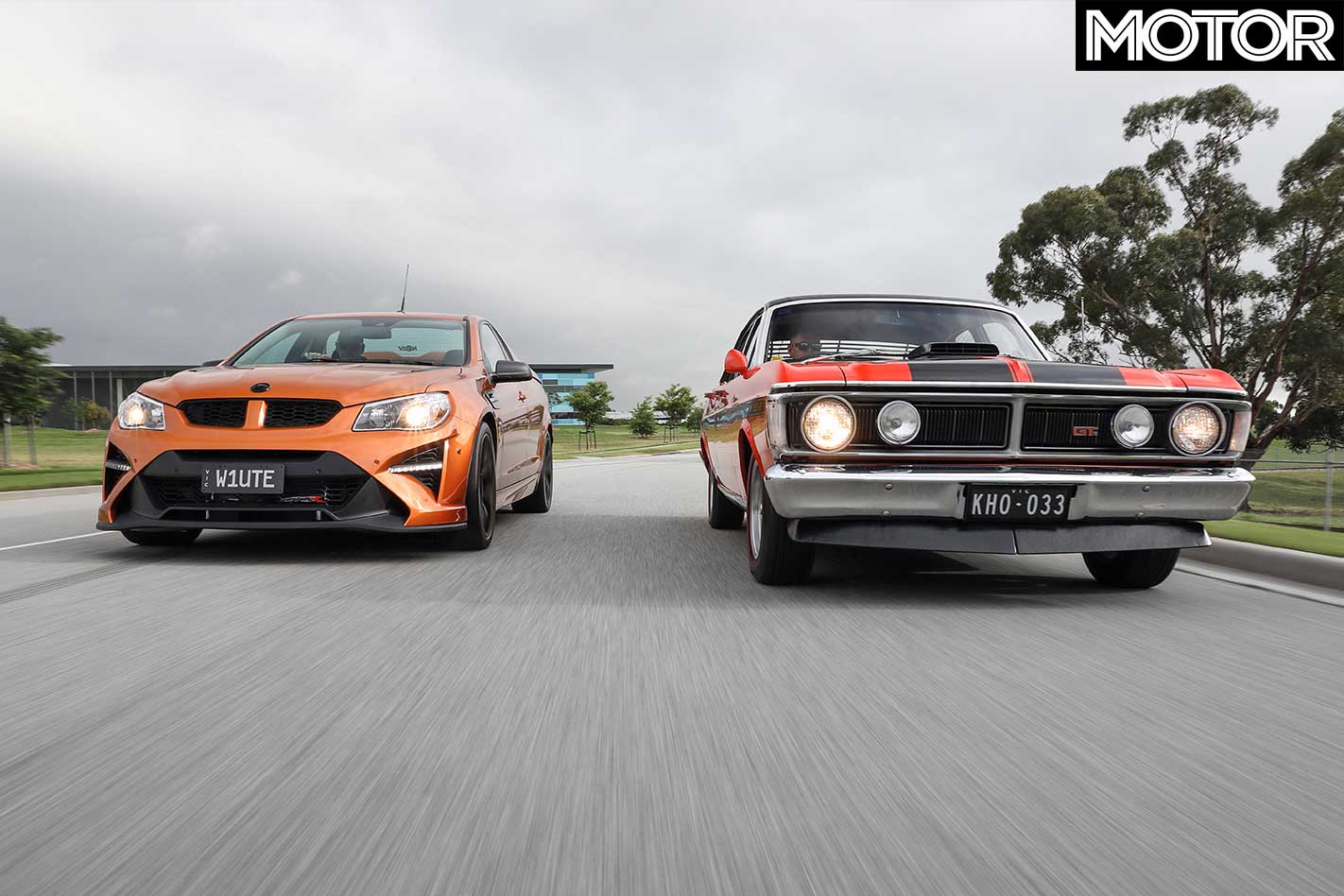
| u00a0 | HSV Maloo GTSR W1 | Ford Falcon XY GT-HO Phase III |
| Body | 2-door, 2-seat ute | 4-door, 5-seat sedan |
| Drive | rear-wheel | |
| Engine | 6162cc V8, OHV, 16v, supercharger | 5763cc V8, OHV, 16v |
| Bore x Stroke | 103.25 x 92.0mm | 102.0 x 89.0mm |
| Compression | 9.1:1 | 11.5:1 |
| Power | 474kW @ 6500rpm | 224kW @ 5400rpm |
| Torque | 815Nm @ 3900rpm | 515Nm @ 3400rpm |
| Power/Weight | 250kW/tonne | 147kW/tonne |
| Transmission | 6-speed manual | 4-speed manual |
| Weight (dry) | 1896kg | 1524kg |
| Suspension (f) | struts, A-arms, coil springs, anti-roll baru00a0 | struts, coil springs, anti-roll bar |
| Suspension (r) | multi-links, coil springs, anti-roll bar | live axle, leaf springs, anti-roll bar |
| L/W/h | 5181/1899/1481mm | 4689/1869/1397mm |
| Wheelbase | 3009mm | 2819mm |
| Tracks | 1622/1590mmu00a0(f/r) | 1499/1486mm (f/r) |
| Steering | electrically assisted rack-and-pinion | unassisted rack-and-pinion |
| Brakes (f) | 410mm ventilated/drilled discs, 6-piston calipers | 286mm ventilated discs, single-piston calipers |
| Brakes (r) | 372mm ventilated/drilled discs, 4-piston calipers | 254mm drums |
| Wheels | 20.0 x 9.0-inch (f); 20 x 10.0-inch (r) | 15.0 x 7.0-inch (f/r) |
| Tyre Sizes | 265/35 R20 93Y (f); 295/30 R20 (r)u00a0 | 205/70 R15 (f/r) |
| Tyres | Pirelli P Zero Trofeo R | BF Goodrich Radial |
| Value | “A lot” | $900,000 (est) |
| Pros | Rarity; performance; subtlety; Aussieness | Engine; provenance; history; sound |
| Cons | Only four built | Brakes; handling; fuel consumption |
| Rating | 5 out of 5 stars | 5 out of 5 stars |


